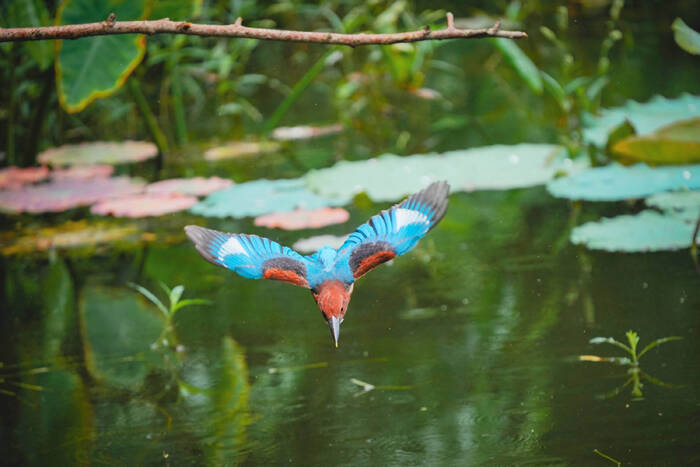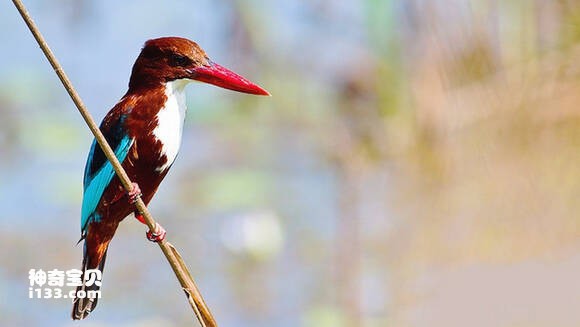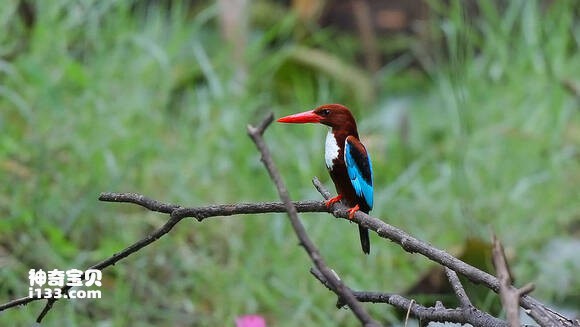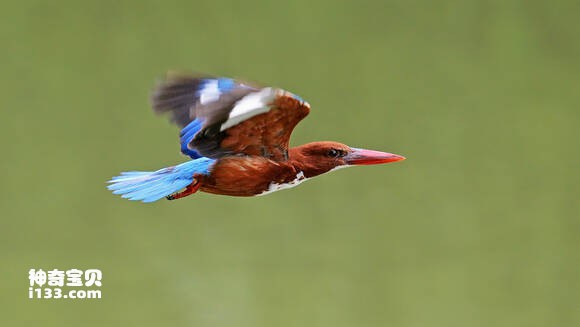Halcyon smyrnensis
IUCN
LCBasic Information
Scientific classification
- name:Halcyon smyrnensis
- Scientific Name:White-breasted fish dog,Halcyon smyrnensis, White-throated kingfisher
- Outline:Climbing birds
- Family:o.alcedo s.alcedo f.alcedo g.alcedo
Vital signs
- length:26.5-29.6cm
- Weight:54-100g
- lifetime:No verification information
Feature
Chin, throat, chest and center of chest white
Distribution and Habitat
White-breasted Kingfisher is distributed in Eurasia and northern Africa (including the whole of Europe, Africa north of the Tropic of Cancer, the Arabian Peninsula, and Asia north of the Himalayas, Hengduan Mountains, Minshan Mountains, Qinling Mountains, and Huaihe River), the Indian subcontinent and southwest China (including India, Bangladesh, Bhutan, Sikkim, Nepal, Pakistan, Sri Lanka, Maldives, and southeastern Tibet, China), Indochina and southeastern coastal areas of China (including Myanmar, Vietnam, Laos, Cambodia, Thailand, southeastern coastal areas of China, Hong Kong, China, Hainan Island), Pacific islands (including Taiwan Province, Dongsha Islands, Xisha Islands, Zhongsha Islands, Nansha Islands, Philippines, Brunei, Malaysia, Singapore, Sumatra, Java Island, and Papua New Guinea in Indonesia).
White-breasted Kingfisher inhabits mountain forests and the banks of rivers and lakes in the foothills of plains. It also appears on the banks of water bodies such as ponds, re
Appearance
The bill is thick and long like a chisel, with a wider base. The peak of the bill is straight, the peak ridge is rounded, and there are no nasal grooves on both sides; the wings are round, the first primary flight feather and the seventh primary flight feather are the same length or slightly shorter, and the second and third primary flight feathers are the same or slightly shorter. , 4 pieces are almost equal in length, and the tail is round.
The chin, throat, and center of the chest of the white-breasted adult bird are pure white; the rest of the head, nape, sides of the neck, and the rest of the lower body are dark maroon, and the two ribs are slightly lighter; the upper back, shoulders, and third-level flight feathers are blue-green; The feathers on the back, waist and tail are all emerald green. The small coverts on both wings are chestnut brown; the middle coverts are black; the exposed parts of the large coverts, primary compound feathers and secondary flight feathers are all
Details
White-throated Kingfisher is a medium-sized bird with 4 subspecies.

White-throated Kingfisher often moves alone, often standing on dead branches of trees or stones by the water, and sometimes standing on power lines, often looking at the water for a long time, waiting for prey. It flies in a straight line at a relatively fast speed, often calling while flying, with sharp and loud calls.

The white-breasted emerald nests in caves on riverbanks, valleys, fields, and soil. It digs a hole to make a nest, which is tunnel-shaped and expands to a nest chamber at the end. The diameter of the nest chamber is mostly 15-20 cm. The depth of the nest hole is 0.5-1.2 meters, which varies greatly depending on the softness of the soil and the difficulty of digging the hole.

The white-breasted kingfisher mainly feeds on fish, crabs, mollusks and aquatic insects. It also eats terrestrial insects such as grasshoppers, locusts, beetles, Lepidoptera, Orthoptera, Coleoptera and Hymenoptera insects and larvae, and small terrestrial vertebrates such as frogs, snakes and rodents.

The breeding period of the white-breasted emerald is from March to June. During the breeding period, the call is loud and clear. It often flies back and forth between the camping nests, calling non-stop. It also often lives on the leafless bare branches of tall trees and chatters loudly. It lays eggs directly on the ground of the nest, with 4-8 eggs per nest, and most of them are 5-7 eggs. The eggs are white, round or oval, and the size is 24.3-30.6 mm x 22.8-27 mm, with an average of 27.4 mm x 24.5 mm. The male and female birds take turns to incubate and feed the chicks.
The distribution range of the white-breasted emerald is very wide, the population size has not yet been quantified, and the population is on the rise.
The white-breasted emerald has been listed in the "Red List of Threatened Species of the World Conservation Union" (IUCN) 2016 ver 3.1-Least Concern (LC).
Listed in China's "National Key Protected Wildlife List" (February 5, 2021) Level 2.
Protect wildlife and eliminate game.
Maintaining ecological balance is everyone's responsibility!








